Everything You Need to Know about Jetson Orin Nano
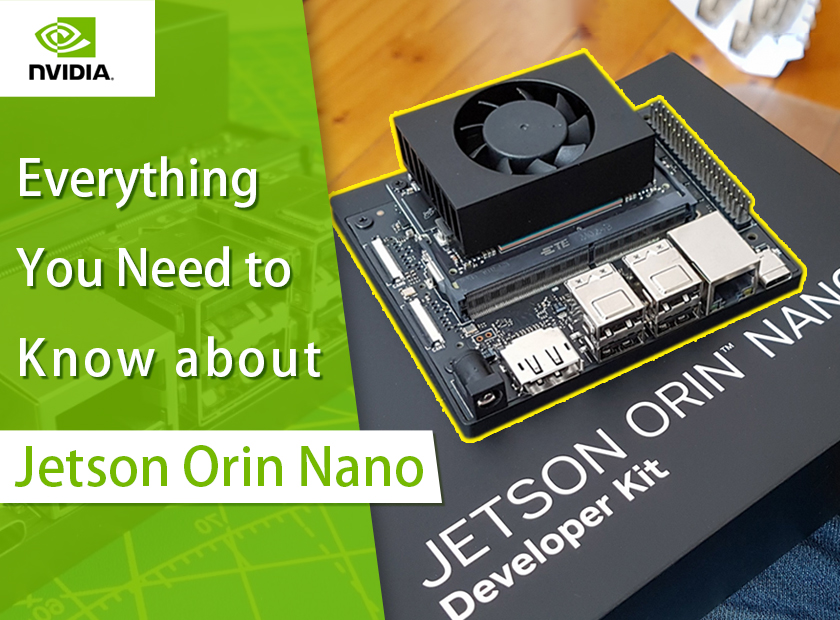
Everything You Need to Know about Jetson Orin Nano
Prologue
Nvidia's range of Jetson boards will never be the typical Raspberry Pi alternative for makers. Aimed at entry-level AI-based robots, drones and cameras, the latest board, the $499 Jetson Orin Nano, boosts processing power while keeping the kit compact.
The Jetson Orin Nano 8GB module adds 1024 ampere-based CUDA cores to the 128 CUDA cores of the Nvidia Maxwell GPU. The additional cores and updated architecture mean that the Orin Nano delivers 80 times the AI performance of the Jetson Nano. The Jeston Orin Nano series starts with six Arm A78AE CPU cores, delivering nearly seven times the performance of the Jetson Nano. The Orin Nano uses the same AI architecture as the Jetson AGX Orin module but at a more affordable price.
What is Jetson Orin Nano?
Jetson Nano Orin is a strong product line in Nvidia's Jetson family of small, powerful computers designed to power entry-level edge AI applications and devices.
We have seen the most powerful SoC on an embedded system in the world, offering unparalleled performance for the price, thanks to Jetson Orin Nano’s 6-core Arm Cortex-A78AE CPU and a serious Ampere-based GPU setup that offers 1028 CUDA cores and 32 third-generation Tensor cores, making it computationally the most powerful SoC we've seen.
If you noticed that the “AE” suffix was up there, it refers to a special core architecture that can accomplish SIL 3 safety for essential industrial applications with unique smodes. It is interesting to note that Tegra's Orin series chips are reportedly the first to license this core – the Orin Nano is truly at the cutting edge of technology.
On board is 8GB of LPDDR5 RAM, shared by the CPU and GPU, offering an average memory bandwidth of 68GB/s. Although it isn't as fast as GDDR5 or HBM2 RAM used in discrete GPUs, it shouldn't cause any bottlenecking.
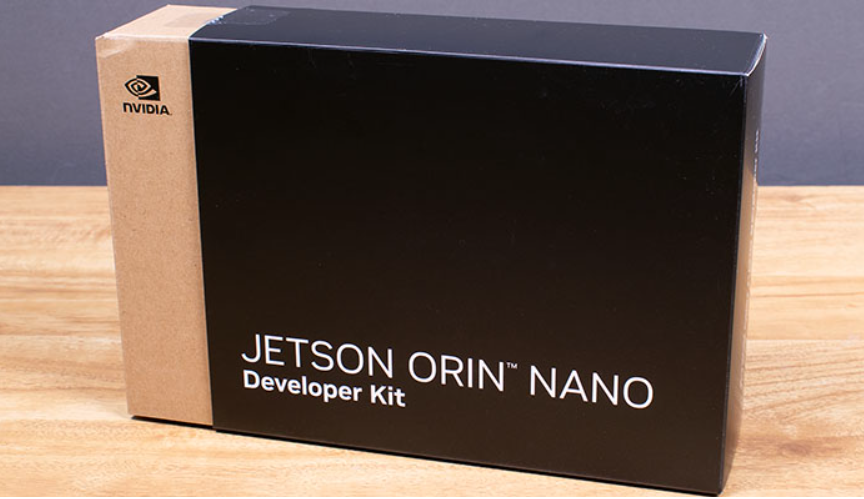
Hardware
The Jetson Orin Nano SOM is available in 4GB and 8GB versions, the latter offering twice the memory and GPU performance. The Developer Kit only includes the 8GB version. The compact carrier board features DisplayPort, USB, Gigabit Ethernet and a USB Type-C port. It also has two MIPI CSI connectors, a 40-pin GPIO header, a PWM header, and an external button control header. The board has expansion options, including a microSD slot, an M.2 Key E slot for Wi-Fi, and two M.2 Key M slots for PCIe. The CPU is a 6-core Arm Cortex-A78AE and the GPU is an NVIDIA Ampere with 1,024 CUDA cores and 32 Tensor cores. The board has no accelerators and supports software-only H.264 video encoding up to 3x 1080p30 and decoding up to 1x 4k60, 2x 4k30, 5x 1080p60 or 11x 1080p30. The board measures approximately 100x79x21mm.
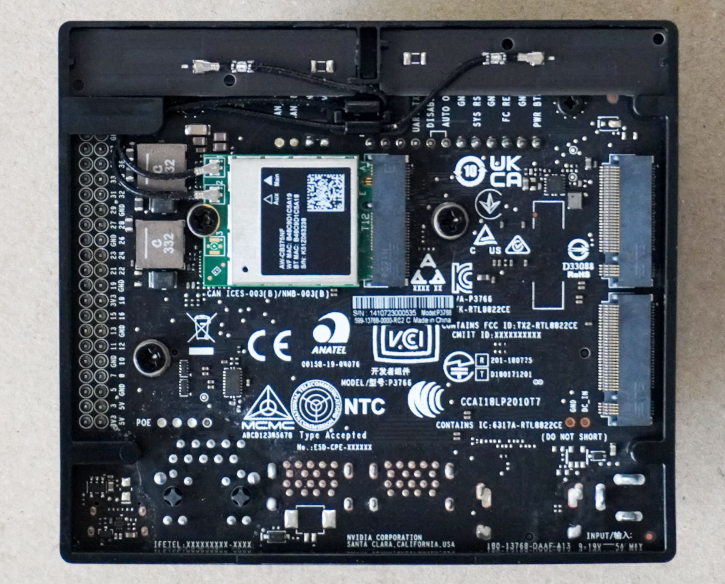
Software
The Jetson Orin Nano runs JetPack, NVIDIA's embedded software stack based on Ubuntu Linux. It was tested on a pre-release version of JetPack 5.1.1, which has minor bugs that should be fixed soon. JetPack 5.1.1 is based on Ubuntu 20.04.5 LTS and comes with various software, but it doesn't include a way to train networks on the device. Therefore, training must be done off-device, which limits its potential as an affordable all-in-one workstation for AI development. However, the Jetson Orin Nano is supported by an impressive software stack, including the TAO Toolkit for training and the Omniverse Replicator for synthetic dataset generation. It supports two M.2 Key M PCIe slots for high-capacity storage and a pre-configured M.2 Key E slot for Wi-Fi connectivity.
The performance
The Jetson Orin Nano offers 80x the AI performance of the older Jetson Nano, but this is based on INT8 precision on the new device and FP16 on the old. When using FP32 precision on both devices, the gain drops to 5.4x, which is still impressive. In addition to switching to a new GPU architecture, the Jetson Orin Nano has eight times as many CUDA cores as the Jetson Nano, plus 32 Tensor cores as well. Two additional cores are running at marginally faster clock speeds, and there is double the memory with the move to LPDDR5 which offers twice as much bandwidth. In addition, the processor has moved to a newer Arm Cortex architecture, which offers two and a half times the bandwidth of the Jetson Nano. However, there are some sacrifices, including the lack of NVDLAs, PVAs, and hardware video encoders. The focus is on on-device edge AI, and the Jetson Orin Nano performs significantly better than the Jetson Nano on various networks. The Jetson Orin Nano is efficient and configurable in 15W full-performance and 7W reduced-power modes.
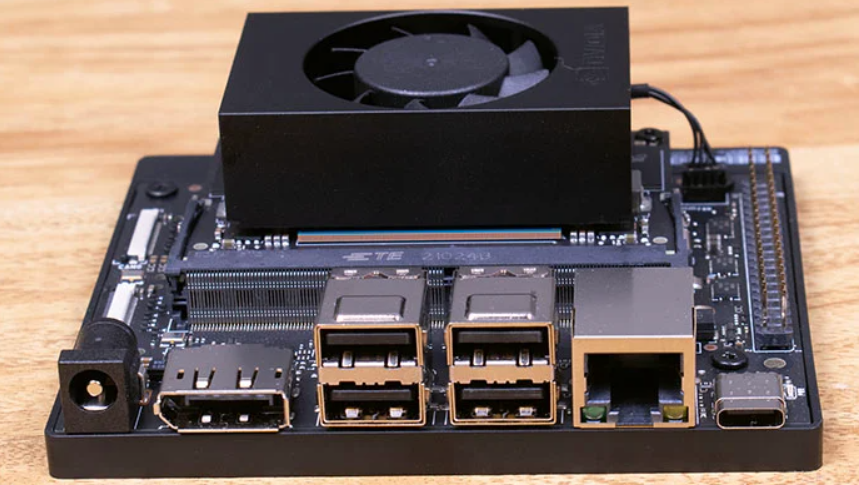
Jetson Orin Nano VS Jetson Nano
It is important not to compare the two Nanos directly, as they serve vastly different markets, and are only similar in name. NVIDIA's $149 Jetson Nano remains an entry-level artificial intelligence platform designed for education and makers, while the Jetson Orin Nano is much higher performance than the older, higher-end Jetson TX2 and Xavier NX-based systems designed for more serious projects and industrial deployments.
There are 4 Cortex A57 cores clocked at 1.47 GHz on the original Jetson Nano, along with 128 Maxwell GPU cores and 4GB of LPDDR4 RAM. It has a lower power rating than its newer counterpart. It is clear that edge technology has advanced a lot in the past few years when you compare the specs side-to-side.
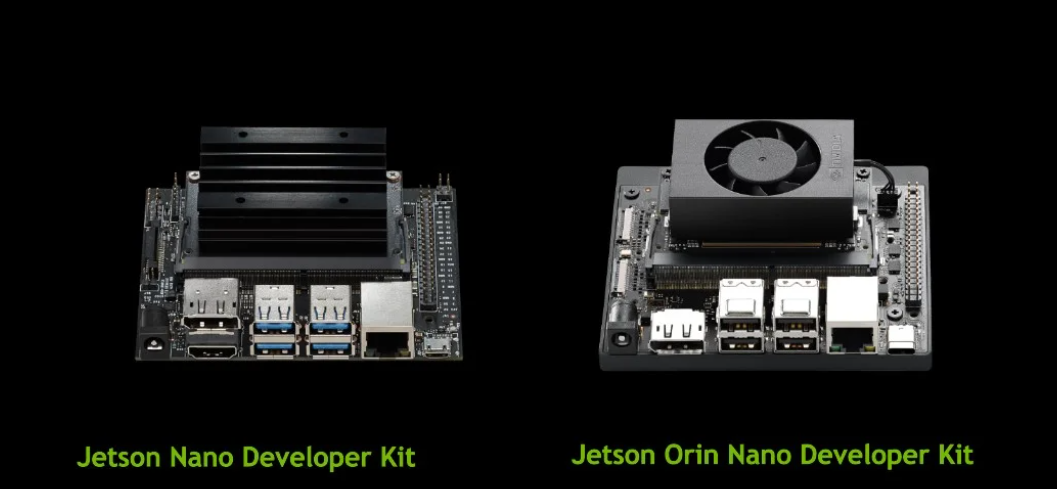
Specification comparison
|
|
Jetson Orin Nano |
Jetson Nano |
|
CPU |
6-core Arm Cortex-A78AE v8.2 64-bit CPU |
Quad-core ARM Cortex-A57 MPCore processor |
|
|
1.5MB L2 + 4MB L3 |
|
|
GPU |
Nvidia Ampere architecture with 1024 Nvidia CUDA cores and |
Nvidia Maxwell architecture with 128 Nvidia CUDA cores |
|
|
32 Tensor cores |
|
|
Memory |
8GB 128-bit LPDDR5 |
4 GB 64-bit LPDDR4, 1600MHz 25.6 GB/s |
|
|
68 GB/s |
|
|
Storage |
Micro SD |
16 GB eMMC 5.1 |
|
|
NVMe M.2 via Carrier Board |
Micro SD |
|
Power |
7W to 15W (5V Input Voltage) |
20W (Max 5V at 4 Amps) |
|
Dimensions |
69 x 45 x 21 mm |
69.6 x 45 x 20 mm |
|
Camera |
2x MIPI CSI-2 22-pin Camera Connectors |
12 lanes (3x4 or 4x2) MIPI CSI-2 D-PHY 1.1 |
|
M.2 Key M |
x4 PCIe Gen 3 |
|
|
|
X2 PCIe Gen 3 |
|
|
M.2 Key E |
PCIe (x1), USB 2.0, UART, I2S, and I2C |
1 x M.2 Key E |
|
USB |
4 x USB 3.2 Gen2 |
4x USB 3.0 |
|
|
1 x Type C for debug and device mode |
1 x USB 2.0 Micro-B |
|
Networking |
Gigabit Ethernet |
Gigabit Ethernet |
|
|
RTL8822CE 802.11ac PCIe Wireless Network Adapter |
|
|
Display |
DisplayPort 1.2 |
HDMI 2.0 and eDP 1.4 |
|
GPIO |
40 Pin GPIO |
40 Pin GPIO |
|
|
12 Pin Button Header |
|
|
|
4 Pin Fan Header |
|
|
Power |
DC 9-19V Barrel Jack |
DC Barrel Jack 20W (Max 5V at 4 Amps) |
|
Dimensions |
100 x 79 x 21 mm (Height includes Orin Nano module and cooling solution) |
100 x 80 x 29mm (Height includes Jetson Nano module and cooling solution) |
In passing, there is no visible difference between the Orin Nano and the Jetson Nano, except that the Orin Nano has a fan built into the heatsink and there is no HDMI port, instead, there is a USB-C port which replaces the Jetson Nano's micro USB port. Even when running at the full 15W, the fan remained quiet, unlike other SBC fans which have been tested before. The fan remained silent even when testers ran one of Nvidia's recommended inference benchmarks.
Final Words
The new Jetson Orin Nano has impressed reviewers with its powerful hardware and software capabilities. It is one of the fastest and graphically most powerful single-board computers tested, and NVIDIA's support and tools make AI development fast and easy. Although it lacks some hardware features, this does not take away from the impressive performance achievable from such a small device. While it is more expensive than most SBCs at $499, it offers more features and capabilities. For beginners in AI, the $149 Jetson Nano may be a better option, but for those experienced in the field, the Jetson Orin Nano is a must-have for tackling more demanding projects.
Whether you are a maker looking for a powerful SBC for AI or the classic Raspberry Pi product, Elecrow provides you with the necessary electronic components for your DIY electronic projects with these powerful embedded SBCs, and Elecrow can even help you turn your DIY electronic ideas into reality and mass produce them for commercial purposes and make your own profits! Join Elecrow's Partner Seller Program for more details.
________________________________________________________________________
Btw, Raspberry Pi boards are popular and versatile tools for makers. The latest addition to the lineup, Raspberry Pi 5, is the most powerful version yet. Why not upgrade your projects with this cutting-edge device? Join our Giveaway campaign for Elecrow fans to win a brand new Raspberry Pi 5. Don't miss out! Good luck!
Elecrow Monthly RaspberryPi 5 Giveaway
